- Home
- Peter Straub
Mystery
Mystery Read online
Praise for
MYSTERY
and
PETER STRAUB’S
BLUE ROSE TRILOGY
“The near perfect mystery.… Has everything a classic whodunit should.… Full of intricate, engrossing, flesh-and-blood suspects and heroes.… Unexpected curves and potholes.… The title says it all.”
—Milwaukee Sentinel
“Murder, mayhem, mystery.… A complex and satisfying tale.… Compelling characters.… A pulse-pounding climax.”
—The Plain Dealer
“A tightly woven tale, crisply rendered, populated with well-drawn characters.”
—San Francisco Chronicle
“Marvelous.… Enormously satisfying.… Unashamedly designed to fascinate.”
—The Sacramento Bee
“The best of Peter Straub’s writing.”
—Houston Chronicle
“The characters are outstanding.… They are the story, enshrouded by a nightmare that never lifts. Peter Straub takes bold risks and he succeeds.”
—San Jose Mercury News
“Enormously entertaining and scary.… Rich, complex, dark, and tough to put down.”
—New York Daily News
FIRST ANCHOR BOOKS EDITION, JANUARY 2010
Copyright © 1990 by Seafront Corporation
All rights reserved. Published in the United States by Anchor Books, a division of Random House, Inc., New York, and in Canada by Random House of Canada Limited, Toronto. Originally published in the United States in hardcover by E.P. Dutton, a division of Penguin Group (USA), Inc., New York, in 1990.
Anchor Books and colophon are registered trademarks of Random House, Inc.
This is a work of fiction. Names, characters, places, and incidents either are the product of the author’s imagination or are used fictitiously. Any resemblance to actual persons, living or dead, events, or locales is entirely coincidental.
Library of Congress Cataloging-in-Publication Data
Straub, Peter, 1943–
Mystery / Peter Straub. —1st Anchor Books ed.
p. cm.
eISBN: 978-0-307-77396-8
I. Title.
PS3569.T6914M97 2010
813′.54—dc22
2009033226
www.anchorbooks.com
v3.1
For Lila Kalinich
and
For Ann Lauterbach
I need, therefore I imagine.
—CARLOS FUENTES
All human society is constructed on complicity in a great crime.
—FREUD, PETER GAY
Contents
Cover
Title Page
Copyright
Dedication
Epigraph
Part One - The Death of Tom Pasmore Chapter 1
Chapter 2
Chapter 3
Chapter 4
Chapter 5
Part Two - Early Sorrows Chapter 6
Chapter 7
Part Three - Hatred and Salvation Chapter 8
Chapter 9
Chapter 10
Part Four - The Shadow Chapter 11
Chapter 12
Part Five - The Founders Club Chapter 13
Chapter 14
Chapter 15
Chapter 16
Chapter 17
Part Six - Heaven Chapter 18
Chapter 19
Chapter 20
Chapter 21
Chapter 22
Chapter 23
Chapter 24
Part Seven - Eagle Lake Chapter 25
Chapter 26
Chapter 27
Chapter 28
Chapter 29
Chapter 30
Chapter 31
Chapter 32
Chapter 33
Chapter 34
Chapter 35
Chapter 36
Chapter 37
Chapter 38
Chapter 39
Chapter 40
Chapter 41
Chapter 42
Chapter 43
Chapter 44
Chapter 45
Chapter 46
Chapter 47
Chapter 48
Chapter 49
Chapter 50
Chapter 51
Part Eight - The Second Death of Tom Pasmore Chapter 52
Chapter 53
Chapter 54
Chapter 55
Chapter 56
Chapter 57
Chapter 58
Chapter 59
Chapter 60
Chapter 61
Chapter 62
Chapter 63
Chapter 64
Chapter 65
Chapter 66
Chapter 67
Chapter 68
Chapter 69
Chapter 70
About the Author
Other Books by This Author
Mill Walk does not exist on any map—let us acknowledge that at the beginning. Extending eastward off Puerto Rico like revisions to an incomplete sentence are the tiny Islas de Culebra and Vieques, in their turn followed by specks named St. Thomas, Tortola, St. John, Virgin Gorda, Anegada—the Virgin Islands—after which the little afterthoughts of Anguilla, St. Martin, St. Barthélemy, St. Eustatius, St. Kitts, Redondo, Montserrat, and Antigua begin to drip south; islands step along like rocks in a stream, Guadeloupe, Dominica, Martinique, St. Lucia, St. Vincent, Barbados, the almost infinitesimal Grenadines, and the little green bump of Grenada, an emerald the size of a doll’s fingernail—from there on, only blue-green sea all the way to Tobago and Trinidad, and after that you are in South America, another world. No more revisions and afterthoughts, but another point of view altogether.
In fact, another continent of feeling, one layer beneath the known.
On the island of Mill Walk, a small boy is fleeing down the basement stairs, in so great a hurry to escape the sounds of his mother’s screams that he has forgotten to close the door, and so the diminishing screams follow him, draining the air of oxygen. They make him feel hot and accused, though of an uncertain crime—perhaps only that he can do nothing to stop her screaming.
He hits the bottom stair and jumps down on the concrete floor, claps his hands over his ears, and runs between a shabby green couch and a wooden rocking chair to the heavy, scarred workbench which stands against the wall. Like the furniture, the workbench is his father’s: despite all the tools—screwdrivers and hammers, rasps and files and tin cans full of nails, C-clamps and pliers, a jigsaw and a coping saw, a gimlet and a chisel and a plane, stacks of sandpaper—nothing is ever created or repaired at this bench. A thick layer of dust covers everything. The boy runs beneath the bench and puts his back to the wall. Experimentally, he takes his hands from his ears. One moment of quiet lengthens into another. He can breathe. The basement is cool and silent. He sits down on the concrete and leans against the grey block of the wall and closes his eyes.
The world remains cool, dark, and silent.
He opens his eyes again and sees a cardboard box, half-hidden in the gloom beneath the bench. This, too, is covered with a thick grey blanket of dust. All around the boy are the tracks of his passage—lines and erasures, commas and exclamation points, words written in an unknown language. He slides toward the box through the fuzz of dust, opens the lid, and sees that, although it is nearly empty, down at its bottom rests a small stack of old newspapers. He reaches in and lifts the topmost newspaper and squints at the banner of the headline. Though he is not yet in the first-grade, the boy can read, and the headline contains a half-familiar name. JEANINE THIELMAN FOUND IN LAKE.
One of their neighbors is named Thielman, but the first name, “Jeanine,” is as mysterious as “found in lake.” The next newspaper in the stack also has a banner headline. LOCAL MAN CHARGED WITH THIE
LMAN MURDER. The next paper down, the last, announces MYSTERY RESOLVED IN TRAGEDY. Of these four words, the boy understands only “in.” The boy unfolds this issue of the paper and spreads it out before him. He sees the word “Shadow,” the words “wife,” “children.” None of the people in the photographs are people he knows.
Then he spreads out all the newspapers and sees a picture of a woman who looks something like his mother. She would like to see this picture, he thinks: he could give her the present of these interesting old newspapers he found beneath the workbench.
He clumsily gathers up the newspapers in his arms and walks out from beneath the bench and through the furniture. A section of pages slips away and splashes onto the floor, but he does not stoop to pick it up. The boy climbs the basement stairs into the warmer upper air, comes out into the kitchen, and walks through it to the hallway.
His mother stands in her blue nightgown, looking at him. Her hair is wild, and her eyes are somewhere else, like eyes that have rolled all the way over in her head and only seem to look out. Did you hear me?
He shakes his head.
You didn’t hear your name?
He comes toward her, saying, I was in the basement—look at what I found—for you—
She floats toward him in her blue nightgown and wild hair. You don’t have to hide from me.
His mother snatches away his present, already not a present but a terrible mistake, and more pages slither onto the floor. She holds up one of the sections of the newspaper. The boy sees her face go into itself the way her eyes had gone into themselves, as if she has been struck by some invisible but present demon, and she wobbles away toward the kitchen, the newspaper dripping from her hands. A laugh that is not a laugh but an inside-out scream flies out of her mouth. She lands in a chair and puts her face in her hands.
PART ONE
THE DEATH
OF TOM PASMORE
One June day in the mid-fifties Tom Pasmore, a ten-year-old boy with skin as golden as if he had been born with a good fourth-day suntan, jumped down from a milk cart and found himself in a part of Mill Walk he had never seen before. A sense of urgency, of impendingness, had awakened him with the screams that came from his mother’s bedroom and clung to him during the whole anxious, jittery day, and when he waved his thanks to the driver, this feeling intensified like a bright light directed into his eyes. He thought of hopping back on the milk cart, but it was already jingling away down Calle Burleigh. Tom squinted into the bright dusty haze through which passed a steady double stream of bicycles, horse carts, and automobiles. It was late afternoon, and the light had a molten, faintly reddish cast that suddenly reminded him of panels from comic books: fires and explosions and men falling through the air.
In the next moment this busy scene seemed to suppress beneath it another, more essential scene, every particle of which overflowed with an intense, unbearable beauty. It was as if great engines had kicked into life beneath the surface of what he could see. For a moment Tom could not move. Nature itself seemed to have awakened, overflowing with being.
Tom stood transfixed in the heavy, slanting reddish light and the dust rising from the roadway.
He was used to the quieter, narrower streets of the island’s far east end, and his glimpse of a mysterious glory might have been no more than a product of the change from Eastern Shore Road. What he was looking at was another world, one he had never seen before. He had no exact idea of how to get back to the far east end and the great houses of Eastern Shore Road, and less idea of why he was searching for a certain address. A bicycle bell gave a rasping cry like the chirp of a cricket, a horse’s ironclad hoof struck the packed dirt of Calle Burleigh, and all the sounds of the wide avenue reached Tom once again. He realized that he had been holding his breath, and that his eyes were blurry with tears. Already far down the avenue, the milk driver tilted toward the sun and the sturdy brown cob that pulled his cart. The ching-ching-ching of the bottles had melted into the general hum. Tom wiped moisture from his face. He was not at all sure of what had just happened—another world? Beneath this world?
Tom continued to melt back into the scene before him, wondering if this experience, still present as a kind of weightlessness about his heart, was what had been impending all during the day. He had been pushed—pushed right out of his frame. For an elastically long second or two—for as long as the world had trembled and overflowed with being—he had been in the other world, the one beneath.
Now he smiled, distracted by this notion from Jules Verne or Robert Heinlein. He stepped back on the sidewalk and looked east. Both sides of the wide avenue were filled with horses and vehicles, at least half of which were bicycles. This varied crowd moved through the haze of light and dust and extended as far as Tom could see.
It seemed to Tom that he had never really known what the phrase “rush hour” meant. On Eastern Shore Road, rush hour consisted of a car or two honking at children to get out of the street. Once Tom had seen a servant ride a bicycle straight into the bicycle of another servant, spilling clean white laundry all over the warm red brick of the road—that was rush hour. Of course Tom had been in his father’s office in the business district; he had seen the midday traffic on Calle Hoffmann; and he had gone to the harbor, Mill Key, with his parents and passed beneath rows of palms in the company of jitneys and cabs and broughams; and at Mill Key he had seen the conveyances drawn up to take the new arrivals downtown to their hotels, the Pforzheimer or the St. Alwyn. (Strictly speaking, Mill Walk had no tourist hotels. The Pforzheimer took in bankers and moneymen, and the St. Alwyn catered to drummers, traveling musicians like Glenroy Breakstone and the wondrous Targets, gamblers, that class of person.) He had never been in the business district at the close of a workday, and he had never seen anything like the sweep and the variety of the traffic moving east and west, primarily west, toward Shurz Bay and Elm Cove, on Calle Burleigh. It looked as though everyone on the island had simultaneously decided to dash off to the island’s other side. For a moment of panic that seemed oddly connected to the wonderful experience he had just undergone, Tom wondered if he would ever be able to find his way back again.
But he did not want to go home, not until he had found a certain house, and he imagined that when the time came he would find someone as accommodating as the milk driver, who in spite of the NO PASSENGERS ALLOWED sign at the front of the cart had invited him to hop on board and then quizzed him about girlfriends all during the long trip west—Tom was big for his age, and with his blond hair and dark eyes and eyebrows he looked more like thirteen than ten. This thing had been nagging at him all day, making it impossible to read more than a page or two at a time, driving him from his bedroom to the living room to the white wicker furniture on the porch, until at last he had resorted to walking back and forth on the big front lawn, wondering vaguely if Mrs. Thielman’s Sam might run into Mrs. Langenheim’s Jenny again, or if a crazy drunk might wander into the street and start yelling and throwing rocks, as had happened two days before.
The funny thing was that though the feeling of glory, overflowing being, had passed, the other feeling did not fade with it but lingered, as powerful as ever.
He was being pushed, being moved.
Tom turned around to get a better fix on this strange area, and found himself looking between two sturdy wooden houses, each placed atop its own narrow slanting lawn like a nut on a cupcake, at another row of houses set behind them on the next street. Tall elms arched over this second street, which seemed as quiet as Eastern Shore Road. The houses beneath the elms were one notch less impressive than those on Calle Burleigh. Tom instantly understood that this second street was forbidden territory. This information was not ambiguous. The little street might as well have had a chain-link fence around it and a sign commanding him to KEEP OUT: a spear of lightning would sizzle right down out of the sky and impale him if he entered that street.
The imaginary light that shone on his face became stronger and hotter. He had been right to come all
this way. He stepped sideways, and a little two-story wooden house painted a very dark brown on the top story and a bright buttery yellow on the bottom came into view on the forbidden street.
Two days earlier, Tom had been lying on the striped yellow chaise in the living room reading Jules Verne, inside the imaginary but total safety of words on a page organized into sentences and paragraphs—a world both fixed and flowing, always the same and always moving and always open to him. This was escape. It was safety. Then a loud noise, the sound of something striking the side of the house, had pulled him up on the yellow chaise as roughly as a hand shaking him from sleep. A moment later Tom heard a blurry voice shouting obscenities in the street. “Bastard! Shithead!” Another rock crashed against the side of the house. Tom had jumped from the chaise and moved to the front window, unconsciously keeping his place in the book with his index finger. A middle-aged man with a thick waist and short, thinning brown hair was weaving back and forth on the sidewalk beside a slumped canvas bag from which a few large stones had spilled. The man held a baseball-sized rock in each hand. “Do me like this!” he yelled. “Think you can treat Wendell Hasek like he’s some kind of jerk!” He turned all the way around and nearly fell down. Then he rounded his shoulders like an ape and squinted furiously at the two houses—each with great columns, round turrets, and twin parapets—across the street. One of these, the Jacobs house, was empty because Mr. and Mrs. Jacobs had gone to the mainland for the summer; the other was inhabited by Lamont von Heilitz, a fantastic and sour old man who lived in the shadows and echoes of some vague ancient scandal. Mr. von Heilitz always wore gloves, pale grey or lemon yellow, changed clothes five or six times a day, had never worked a single day in his whole life, and darted out on his porch to yell at children who threatened to step on his lawn. The chaos-man hurled one of his rocks toward the von Heilitz house. The rock banged against the rough stone side of the house, missing a large leaded window by only a few inches. Tom had wondered if Mr. von Heilitz would materialize on his front porch shaking a fist in a smooth grey glove. Then the man twitched his head as if to dislodge a fly, staggered back a few steps, and bent down for another rock, either forgetting the spare in his left hand or feeling that one rock was simply not enough. He thrust his hand into the canvas sack and began rooting around, presumably for a rock of the proper dimensions. He wore wash pants and a khaki shirt unbuttoned half of the way down the bulge of his stomach. His suntan ended at an abrupt line just below his neck—the protruding stomach was a stark, unhealthy white. The chaos-man lost his balance as he leaned down deeper into the bag and toppled over on his face. When he got himself up on his knees again, blood covered the lower half of his face. He was squinting now at Tom’s house, and Tom stepped back from the window.

 Poe's Children: The New Horror: An Anthology
Poe's Children: The New Horror: An Anthology Koko
Koko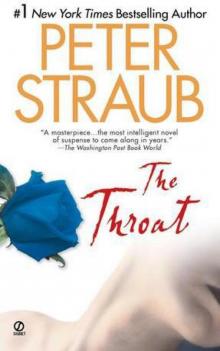 The Throat
The Throat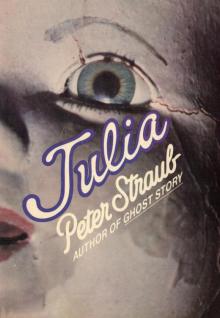 Julia
Julia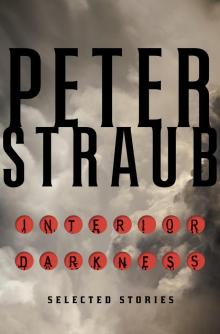 Interior Darkness: Selected Stories
Interior Darkness: Selected Stories A Dark Matter
A Dark Matter Floating Dragon
Floating Dragon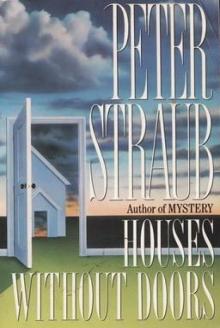 Houses Without Doors
Houses Without Doors Mr. X
Mr. X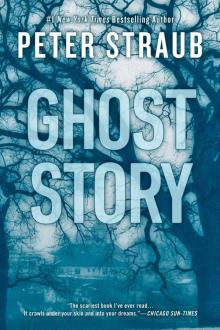 Ghost Story
Ghost Story Mystery
Mystery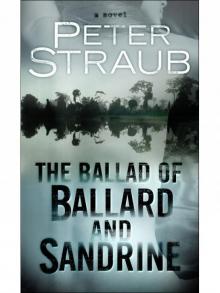 The Ballad of Ballard and Sandrine
The Ballad of Ballard and Sandrine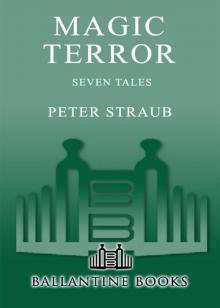 Magic Terror
Magic Terror In the Night Room
In the Night Room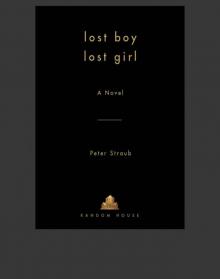 Lost Boy Lost Girl
Lost Boy Lost Girl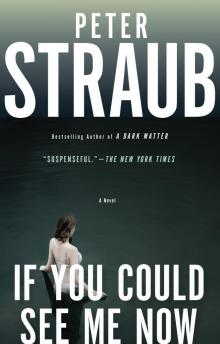 If You Could See Me Now
If You Could See Me Now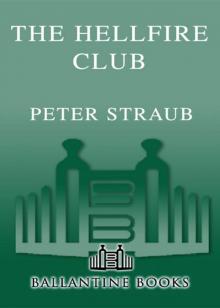 The Hellfire Club
The Hellfire Club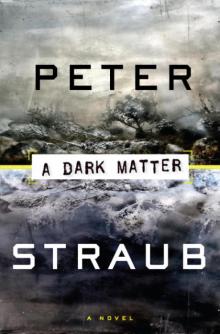 A Dark Matter: A Novel
A Dark Matter: A Novel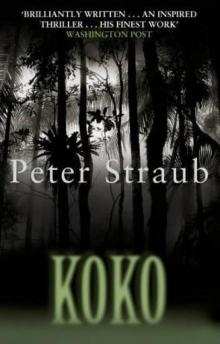 Koko brt-1
Koko brt-1 Shadowland
Shadowland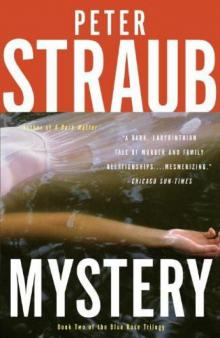 Mystery brt-2
Mystery brt-2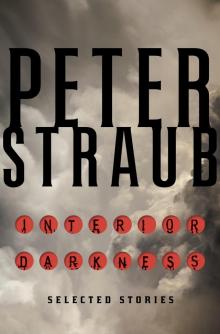 Interior Darkness
Interior Darkness Poe's Children
Poe's Children